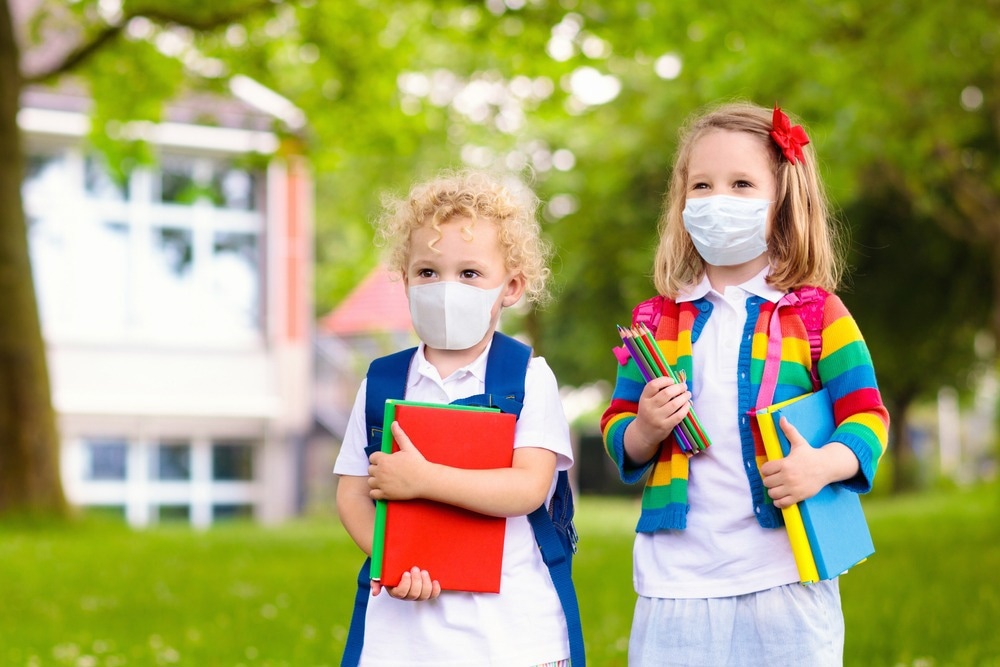Children are less susceptible to the coronavirus disease 2019 (COVID-19) as compared to adults and also have a lower risk of developing severe symptoms. However, there remains a lack of data regarding the number of true infections and rate of disease complications among the pediatric population.

Study: SARS-CoV-2 Infections in Icelandic Children Close Follow-Up of All Confirmed Cases in a Nationwide Study. Image Credit: FamVeld / Shutterstock.com
About the study
In the present study, researchers describe COVID-19 incidence, source of SARS-CoV-2 infection, severity and duration of clinical symptoms, disease complications, and outcomes of COVID-19 in children.
The study included children who were diagnosed with COVID-19 and were subsequently treated at a follow-up clinic. The parents or guardians of the children received telephone calls at the time of COVID-19 diagnosis, and an initial questionnaire was completed. Demographic data, as well as clinical history related to the patients, was also obtained.
During the symptomatic phase of the infection, the researchers communicated with parents or guardians every one to two days, wherein a standard set of questions was asked. In the asymptomatic phase, communications were performed every three to four days until the patient was free from recommended isolation.
Patients were classified according to their age. Moreover, groups included those younger than six months, six months to three years, four to seven years, eight to 13 years, and 14 to 17 years of age.
The calculation of age-standardized incidence was conducted by categorizing patients into three groups of zero to three, four to 13, and 14 to 17-year-olds. The duration of symptoms was analyzed by categorizing the data as less than two days, three to nine days, and more than ten days. Additionally, the waves of COVID-19 infections were defined to be between March and June 2021, July 2020 and May 2021, and June and August 2021.
All laboratory-confirmed COVID-19 cases were diagnosed using reverse transcription-quantitative polymerase chain reaction (RT-qPCR) assay for the detection of SARS-CoV-2 ribonucleic acid (RNA) in nasopharyngeal and/or oropharyngeal swabs.
Study findings
Taken together, 16% of positive COVID-19 cases in Iceland were detected in populations younger than 18 years old.
The overall age-standardized incidence of COVID-19 was 21.5 per 1,000 children. Comparatively, COVID-19 incidence among children younger than four years old was 10.9 per 1,000, whereas the incidence among four to 13 years old was 21.5 per 1,000 children. Furthermore, the incidence rate in 14 to 17 years old was 31.8 per 1,000.
Among the total number of COVID-19 cases, 52.5% were males. A total of 5.5% of COVID-19-positive children reported a history of asthma, heart failure, type 1 diabetes mellitus, immunodeficiency, and cerebral palsy.
Although 21.5% of children were asymptomatic, 48.1% and 42.5% of the children reported upper and lower respiratory symptoms, respectively. Among symptomatic patients, 34% and 30% reported fever and headache, respectively.
Asymptomatic COVID-19 cases were more likely to be detected among four to seven and eight to 13-year-old children. Comparatively, mild symptoms were reported in 73.9% of children, while moderate symptoms were reported by 4.6%. Severe symptoms were not reported in any of the COVID-19-positive children.
Almost 9% of children experiencing moderate symptoms had an underlying illness. However, no direct association was observed between moderate symptom severity and underlying illnesses, as 7.3% of the moderately symptomatic children and 4.5% of the healthy children had an underlying medical condition. Infants aged six months and younger experienced either mild or no symptoms.
The median duration of SARS-CoV-2 infection was five days. Among symptomatic patients, about 2% experienced symptoms for less than two days, 49.6% for two to nine days, and 15.9% for 10 days or more.
Adolescents were more likely to experience symptoms for ten days or more. Conversely, children aged four to seven years old were significantly less likely to exhibit symptoms for ten days or more.
The source of infection in 65.3%, 12.5%, 13.2%, and 9% of cases were household, school- or day-care-related, associated with leisure activities, and unknown, respectively. No association between the source of infection and disease severity was observed.
Conclusions
The current study provided novel insights into the number of true COVID-19 cases and related complications that occur in children. Furthermore, the researchers report that COVID-19 in children primarily manifests in the form of non-severe symptoms that do not necessitate hospitalization.
Journal reference:
- Valtyr T., Bjornsdottir, K. L., Love, T., & Haraldsson, A. (2022). SARS-CoV-2 Infections in Icelandic Children Close Follow-Up of All Confirmed Cases in a Nationwide Study. The Pediatric Infectious Disease Journal. doi:10.1097/INF.0000000000003626.